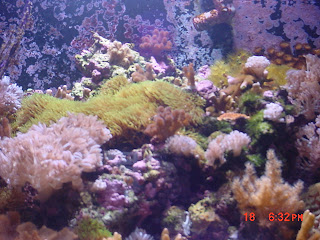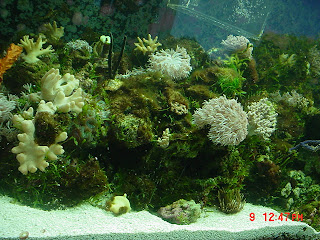
This is an overview of the center of Reef A. This reef is nearly two years old. The Xenia was just trimmed back again as it tends to shade colonial animals. This reef has 3 species of acros, 2 monti., 2 pocillo., and 1 Hynophora (aka horn coral). Four species of zooanthids, star polyps, Xenia, Tree Coral all competing for territory!
Note the M. capricornis, the orange plate coral.
















































